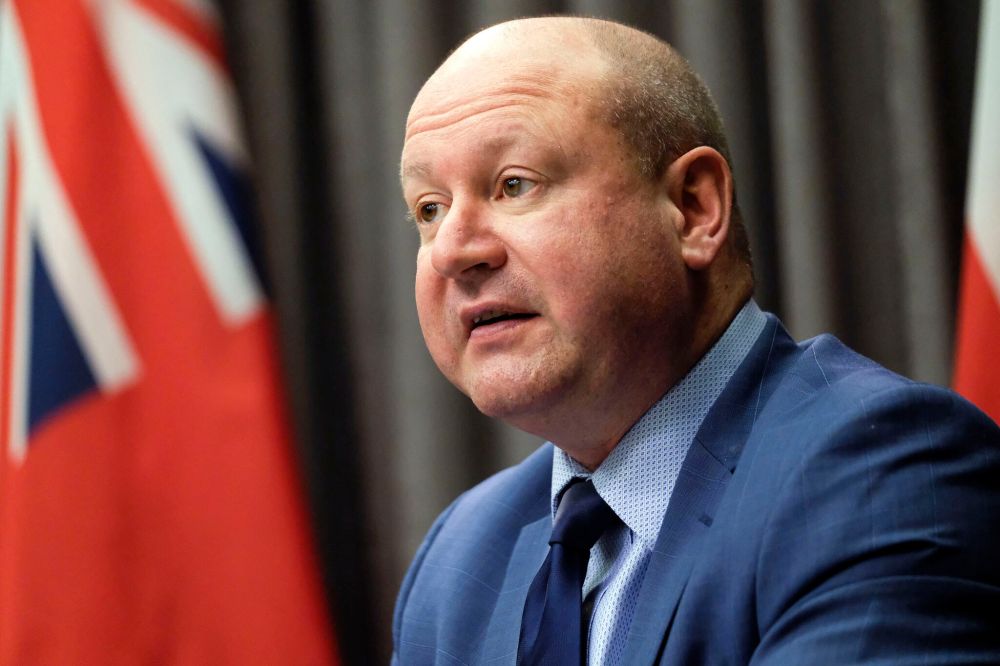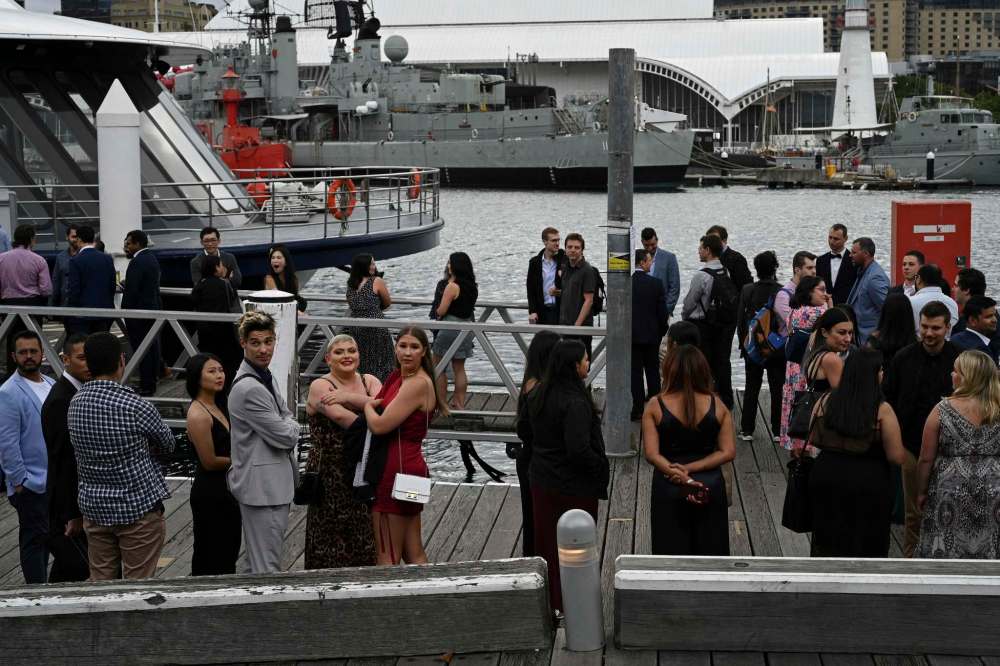Short-term pain, virus-free gain Life returning to normal in Australian state of six million people after 38 days without a single case; infectious-disease experts turning up volume on 'COVID-Zero' approach
Read this article for free:
or
Already have an account? Log in here »
To continue reading, please subscribe:
Monthly Digital Subscription
$0 for the first 4 weeks*
- Enjoy unlimited reading on winnipegfreepress.com
- Read the E-Edition, our digital replica newspaper
- Access News Break, our award-winning app
- Play interactive puzzles
*No charge for 4 weeks then price increases to the regular rate of $19.00 plus GST every four weeks. Offer available to new and qualified returning subscribers only. Cancel any time.
Monthly Digital Subscription
$4.75/week*
- Enjoy unlimited reading on winnipegfreepress.com
- Read the E-Edition, our digital replica newspaper
- Access News Break, our award-winning app
- Play interactive puzzles
*Billed as $19 plus GST every four weeks. Cancel any time.
To continue reading, please subscribe:
Add Free Press access to your Brandon Sun subscription for only an additional
$1 for the first 4 weeks*
*Your next subscription payment will increase by $1.00 and you will be charged $16.99 plus GST for four weeks. After four weeks, your payment will increase to $23.99 plus GST every four weeks.
Read unlimited articles for free today:
or
Already have an account? Log in here »
Hey there, time traveller!
This article was published 11/12/2020 (1829 days ago), so information in it may no longer be current.
Stephen Duckett is preparing to host 20 of his friends and family at his home this week for dinner. It’s summer in his hometown of Melbourne, Australia, and for six consecutive weeks, the state of Victoria, with a population of more than six million, hasn’t recorded a single case of COVID-19.
“We’re pretty close to COVID-normal,” Duckett, health program director for the Melbourne-based Grattan Institute, said by phone earlier this week from Down Under. “We have gone without any new local infections for the past 38 days, and so the government has slowly lifted restrictions over that period.”
“Life is pretty much returning to normal,” he said.
The dinner party comes after 112 days of severe lockdown, during which Duckett and millions of neighbours were mostly confined to their homes.
In August, the epidemic in Victoria reached its highest point, following an outbreak of the virus that quickly grew out of control; the state was reporting 700 new cases daily as contact tracing and testing capacities were overwhelmed.
In his role with the Grattan Institute, an independent public-policy think tank, Duckett was consulted by Australian political leaders before their decision to pursue suppression of the virus to the point where community transmission would be eliminated prior to reopening.
“It’s not costless,” he said, noting the lockdown came at the expense of jobs, businesses, mental health and more, “but there was overwhelming (public) support, nevertheless.
“The virus is not here, so it really changes some of the debate.”
“The virus is not here, so it really changes some of the debate.”
– Stephen Duckett
Far from Melbourne, in Canada’s keystone province, Winnipeggers have been living under critical-red level restrictions for 40 days. Business owners and employees in the hospitality sector and other industries have struggled to operate under orders impacting services and forcing closures for the past 60 days.
Despite the crackdown, the province has continued to report high case numbers and double-digit test-positivity rates.
On Friday, four weeks into the code-red circuit breaker — which had been described by public-health officials as a “short, sharp” intervention, but has since been extended until at least Jan. 8 — there were 447 new infections.

Chief public health officer Dr. Brent Roussin has said repeatedly the province’s strategy is not to eliminate transmission of the virus, but to protect those most vulnerable and manage cases and reduce community transmission so hospitals do not become overwhelmed.
“Being in a pandemic is challenging, and I think we have to accept that we’re going to see cases of COVID-19. We can see right now with these restrictions that we have in place — which many Manitobans are vocalizing their discontent with having any restrictions, and many are saying these restrictions are going too far — these restrictions will not get us down to zero cases,” Roussin said last week.
To get down to very low levels of community transmission, restrictions would have to be even more stringent and remain in place for “months and months,” he said.
“… these restrictions will not get us down to zero cases.”
– Chief public health officer Dr. Brent Roussin
“I think the better approach is to have a real control on the transmission, get these numbers down so we can do very urgent case identification and contact tracing and protect those most vulnerable,” he said.
Dr. Andrew Morris, an infectious diseases specialist at Sinai Health System-University Health Network and the University of Toronto, is part of a growing chorus of experts calling for public-health leaders and governments in Canada to pursue a “COVID-Zero” strategy.
“All the Canadian politicians were talking about a balanced approach, and they were doing the same the approach that we’d seen two months earlier fail in Europe,” Morris said in a phone interview from Toronto.
“We were following the exact same approach, which is we’ll wait till things get bad and then we’ll start clamping down. If you look at the places that have done really well, they’ve never had that approach.”

The idea behind the COVID-Zero strategy is to keep transmission rates and cases as close to zero as possible once lockdown restrictions are rolled back, Morris said.
And if case numbers start to rise, a strict and targeted circuit breaker accompanied by financial support and incentives from the government, is introduced to control spread at the earliest opportunity.
“You can’t tolerate growth. You have to make sure that it stays low and you keep it low so once you take off your circuit breaker, hopefully, cases will continue to drop,” Morris said.
“You basically make a societal decision on how quickly you get it lower, but any hint there’s an increase you implement your circuit breaker so that you’re always getting it down.
“My fear for us now because we’re reacting late is not only are we going to have prolonged lockdowns, hardship and misery, and overwhelming our health-care system, but we’re going to have a third wave where the same thing is going to happen again.”
“My fear for us now because we’re reacting late is not only are we going to have prolonged lockdowns, hardship and misery, and overwhelming our health-care system, but we’re going to have a third wave where the same thing is going to happen again.”
– Dr. Andrew Morris, an infectious diseases specialist
Victoria hasn’t let down its guard in exiting its lockdown, despite stopping community transmission over the past six weeks, Duckett said.
Testing in that state has been bolstered and is easily accessible in urban areas — with upwards of 8,000 tests still being performed daily — as have contact-tracing capabilities. People required to self-isolate can expect a visit from police to enforce their quarantine, Duckett said. Meanwhile, waste-water monitoring is in place to look out for traces of the virus to get ahead of any potential spread.
Entry into the country is also controlled, and physical distancing remains a requirement, along with mask-wearing on public transit and in indoor retail places. Capacity limits and gathering-size restrictions remain in place at certain venues, and restaurants and event organizers are required to keep records of their visitors to assist in contact tracing and controlling spread.
“What happened here was, more or less, as soon as the restrictions were lifted, everybody started spending money and the economy bounced back very quickly, indeed,” Duckett said.
“From a business perspective, business wants certainty, and they cannot have certainty if they don’t know is there going to be a second wave or third wave. Those countries which have reduced the mortality rate the most are the ones that have had the best economic outcomes, as well.”
Following Manitoba’s experience in the fall, questions remain about how well-prepared public health is to test, trace and isolate cases when restrictions are eventually lifted so the province doesn’t find itself once again under code red.
Early in the second wave, Manitobans spent hours waiting at test sites to be swabbed for COVID-19 and increased demand on the province’s labs slowed the reporting of results to people in isolation. For those who tested positive, significant pressures on public-health nurses delayed contact-tracing investigations, and many people who had been exposed to the virus continued to go about their daily lives.
“We can see that we let the virus off the hook,” Roussin said on Oct. 26 after reporting 100 new cases and scolding Manitobans for not following orange restricted-level public-health orders.
However, epidemic projections released in December show the province’s pandemic response started to jump the rails well before then. As early as Oct. 4, the trajectory of COVID-19 cases was following the worst-case scenario health officials had drawn up.
And while the number of cases grew, the government announced incremental, targeted restrictions as the month wore on that had little effect on the galloping spread.
Roussin has said the province will be in a position to “urgently investigate” new cases, as well as support and enforce requirements for self-isolation when public-health orders are relaxed.
The province plans to have approximately 560 people employed in contact-tracing positions by Jan. 1, adding more than 100 positions to its roster, with the goal of managing 500 cases a day.
It is also building on its testing strategy by launching a rapid-testing pilot for teachers in January and plans to begin a surveillance-testing program for personal-care home staff.
Roussin said officials are also contemplating programs such as meal stipends and deliveries, as well as engaging grassroots organizations in the response to better control the spread in low-income and marginalized communities.
In the meantime, Manitobans need to follow public-health orders to get case numbers, positivity rates and strain on the hospital system down substantially before restrictions can be eased, he said, adding “time will tell” what level of COVID-19 transmission the health-care system can tolerate.
“We do have a great deal of optimism that next year is going to look much different than where we are right now, but this year we still have to maintain our focus. We need to stay home,” he said.
danielle.dasilva@freepress.mb.ca

Our newsroom depends on a growing audience of readers to power our journalism. If you are not a paid reader, please consider becoming a subscriber.
Our newsroom depends on its audience of readers to power our journalism. Thank you for your support.
History
Updated on Friday, December 11, 2020 10:00 PM CST: Adds photo






